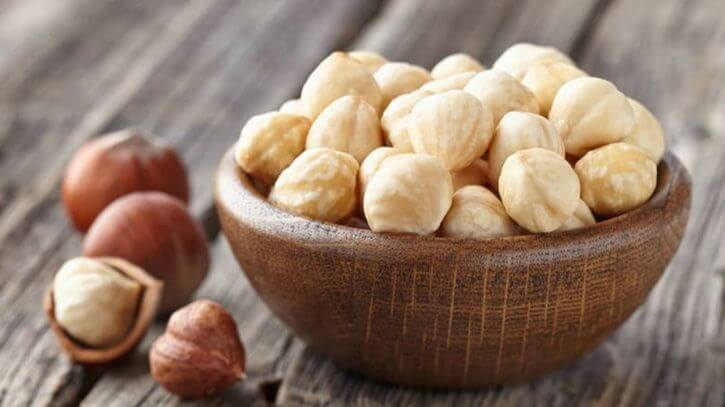Hazelnuts, also known as filberts or cobnuts, are among the most cherished nuts in the world. Renowned for their rich, buttery flavor and nutritional value, hazelnuts play a vital role in global agriculture, health-conscious diets, and gourmet food production. From being a key ingredient in luxury chocolates and spreads like Nutella to serving as a staple in traditional European desserts, hazelnuts are in constant demand. But when it comes to answering the question, “Which country is the largest hazelnut producer in the world?”, the answer is clear and consistent: Turkey.
This article offers an in-depth look at global hazelnut production with a special focus on Turkey’s leading role, along with comparative insights into other significant producers and emerging trends in the international hazelnut industry.
Global Overview of Hazelnut Production

Hazelnuts thrive in temperate climates with cool winters and mild summers, making regions near the Black Sea and parts of Southern Europe ideal for their cultivation. The top hazelnut-producing countries in the world include:
- Turkey
- Italy
- United States (Oregon)
- Azerbaijan
- Georgia
- Spain
- Iran
Among these, Turkey dominates the global hazelnut industry, producing more than 65% of the world’s total output, making it the undisputed leader in hazelnut cultivation and export.
Turkey: The Hazelnut Capital of the World

1. Production Volume and Global Share
Turkey has consistently been the world’s largest hazelnut producer and exporter for decades. According to data from the Food and Agriculture Organization (FAO) and the International Nut and Dried Fruit Council (INC):
- Turkey produces approximately 600,000 to 800,000 metric tons of in-shell hazelnuts annually.
- This accounts for over 65–70% of global hazelnut production.
- It also contributes to more than 70% of global exports.
Turkey’s dominance is unmatched, and its hazelnuts are exported to over 100 countries, making the country a pivotal player in the global nut industry.
2. Major Growing Regions in Turkey
The majority of Turkey’s hazelnuts are grown along the Black Sea coast, where the climate and soil conditions are ideal for hazelnut trees. Key production provinces include:
- Ordu (the largest producing region)
- Samsun
- Giresun (famous for premium-quality hazelnuts)
- Trabzon
- Düzce
- Rize
These regions offer fertile soils, moderate rainfall, and sloped landscapes that contribute to the high quality and yield of Turkish hazelnuts.
3. Types of Turkish Hazelnuts
Turkey cultivates several varieties of hazelnuts, but the most prominent types include:
- Tombul (Round) Hazelnut – Valued for its large size and high oil content.
- Çakıldak – Known for its round shape and rich taste.
- Foşa – Smaller and used mostly in industrial processing.
These varieties are widely used in confections, chocolates, pastries, and bakery products globally.
4. Export Power and Industry Significance
Turkey’s hazelnuts are exported to major markets including:
- Germany
- Italy
- France
- United States
- Canada
- China
- India
One of the largest buyers of Turkish hazelnuts is Ferrero Group, the Italian chocolate giant and manufacturer of Nutella, Ferrero Rocher, and Kinder products. In fact, Ferrero has made substantial investments in Turkish hazelnut processing facilities.
The hazelnut industry is a vital sector for Turkey’s economy, employing over 400,000 families and contributing billions in export revenue annually.
Italy: The Historical Second in Hazelnuts

Italy is the second-largest hazelnut producer in the world, with an annual production of 100,000 to 130,000 metric tons. Hazelnut farming in Italy dates back centuries, and the country is known for its high-quality varieties.
Key Regions:
- Piedmont (home of the prized Tonda Gentile variety)
- Lazio
- Campania
- Sicily
Italy’s hazelnuts are widely used in gourmet confectionery, especially in the production of premium pralines, gelato, and chocolates. Italian hazelnuts are favored for their rich aroma, low skin content, and fine taste.
United States: The Rising Competitor

The United States, particularly the state of Oregon, ranks third globally in hazelnut production. The U.S. produces around 50,000 to 70,000 metric tons annually, with more than 99% of production concentrated in Oregon’s Willamette Valley.
Features of U.S. Hazelnut Industry:
- Focus on sustainability and mechanization
- Cultivation of blight-resistant varieties like Jefferson and Yamhill
- Growing export markets in Asia, especially China, South Korea, and Japan
Although the U.S. lags far behind Turkey in volume, it is rapidly expanding its hazelnut acreage and aims to increase its global market share.
Azerbaijan, Georgia, and Other Emerging Producers

Azerbaijan
Azerbaijan has emerged as a significant hazelnut producer in the last two decades, with annual production exceeding 50,000 metric tons. The country exports primarily to Europe, Russia, and the Middle East.
Georgia
With favorable government incentives and foreign investment, Georgia’s hazelnut sector has grown steadily. It is recognized for its high-quality kernel exports, particularly to Germany and Italy.
Other countries contributing to global hazelnut production include Spain, Iran, China, and Chile—though they remain relatively minor players.
Why Turkish Hazelnuts Dominate the Global Market
1. Climate and Geography
Turkey’s Black Sea region provides optimal growing conditions, with moderate temperatures, fertile soil, and high humidity—all crucial for hazelnut development.
2. Generational Farming
Many Turkish farmers have cultivated hazelnuts for generations. This inherited knowledge ensures efficient, high-quality farming practices and community-based agricultural systems.
3. Strong Export Infrastructure
Turkey has developed efficient logistics, quality inspection systems, and trade partnerships with global buyers, which ensures steady, reliable exports.
4. Government Support
Subsidies, research institutions, and farmer cooperatives have helped modernize and support hazelnut farming, ensuring its sustainability and growth.
Challenges in Hazelnut Production
Despite Turkey’s dominance, the hazelnut industry globally faces several challenges:
1. Climate Change
Irregular rainfall, frost, and drought conditions are affecting yields in Turkey, Italy, and the U.S.
2. Labor Shortages
Harvesting hazelnuts is labor-intensive. As rural populations shrink and costs rise, many producers face a shortage of skilled workers.
3. Pests and Diseases
Hazelnut trees are vulnerable to blights and insect infestations, such as the brown marmorated stink bug, which can destroy entire crops.
4. Market Volatility
Hazelnut prices fluctuate due to geopolitical tensions, trade restrictions, and currency changes, impacting both producers and exporters.
Future Outlook
The global hazelnut market is expected to continue growing due to:
- Rising demand for plant-based foods
- Health-conscious consumers choosing nuts as snacks
- Increased use in confectionery, bakery, and dairy alternatives
According to market forecasts, the global hazelnut market could surpass $8 billion by 2030, driven by demand from Asia-Pacific, Europe, and North America.
Turkey is poised to maintain its leadership due to its established supply chains and high output, while countries like the U.S. and Azerbaijan are expected to see growth in both production and exports.
Conclusion
In conclusion, Turkey is the largest hazelnut producer in the world, contributing over 65% of global production and commanding the international market with its superior quality and robust export network. The country’s favorable climate, deep-rooted agricultural traditions, and strategic trade partnerships have made it the epicenter of the global hazelnut industry.
While Italy and the United States follow as significant producers, Turkey’s unparalleled output, experience, and market control solidify its place at the top. As global consumption continues to rise, particularly in healthy eating and plant-based food trends, the hazelnut industry is expected to thrive, with Turkey continuing to lead the way.






Leave A Comment